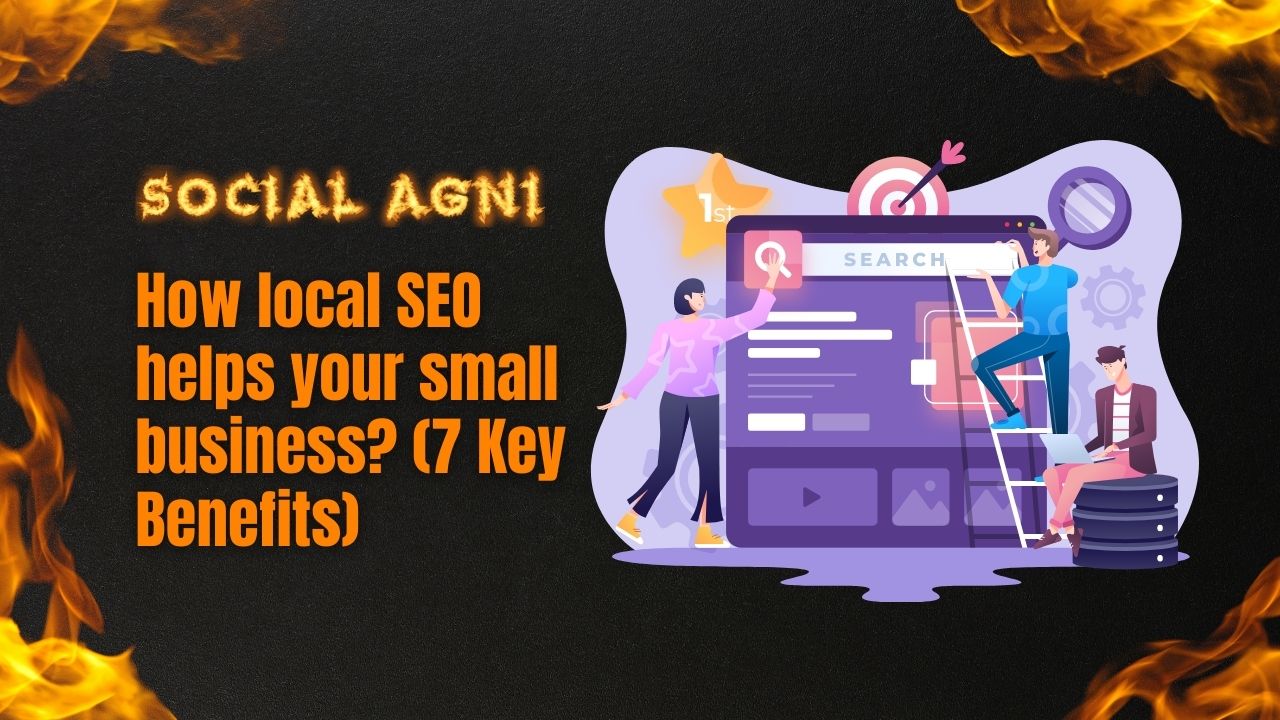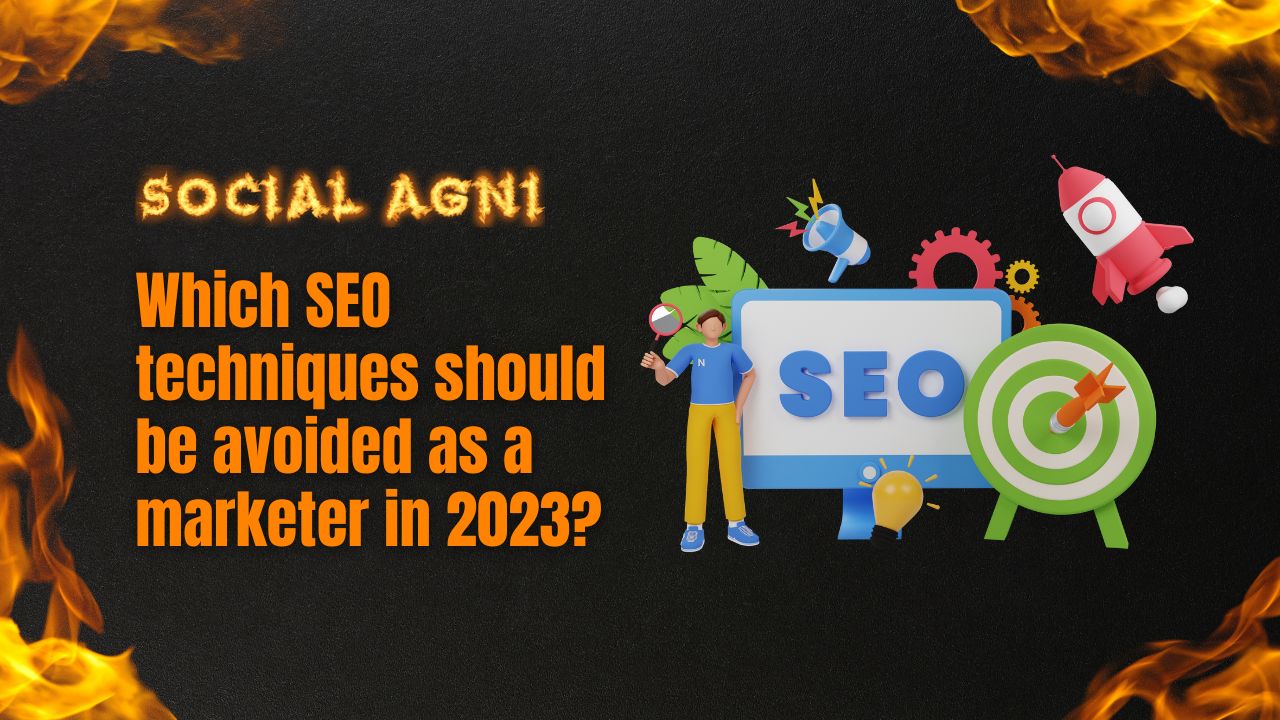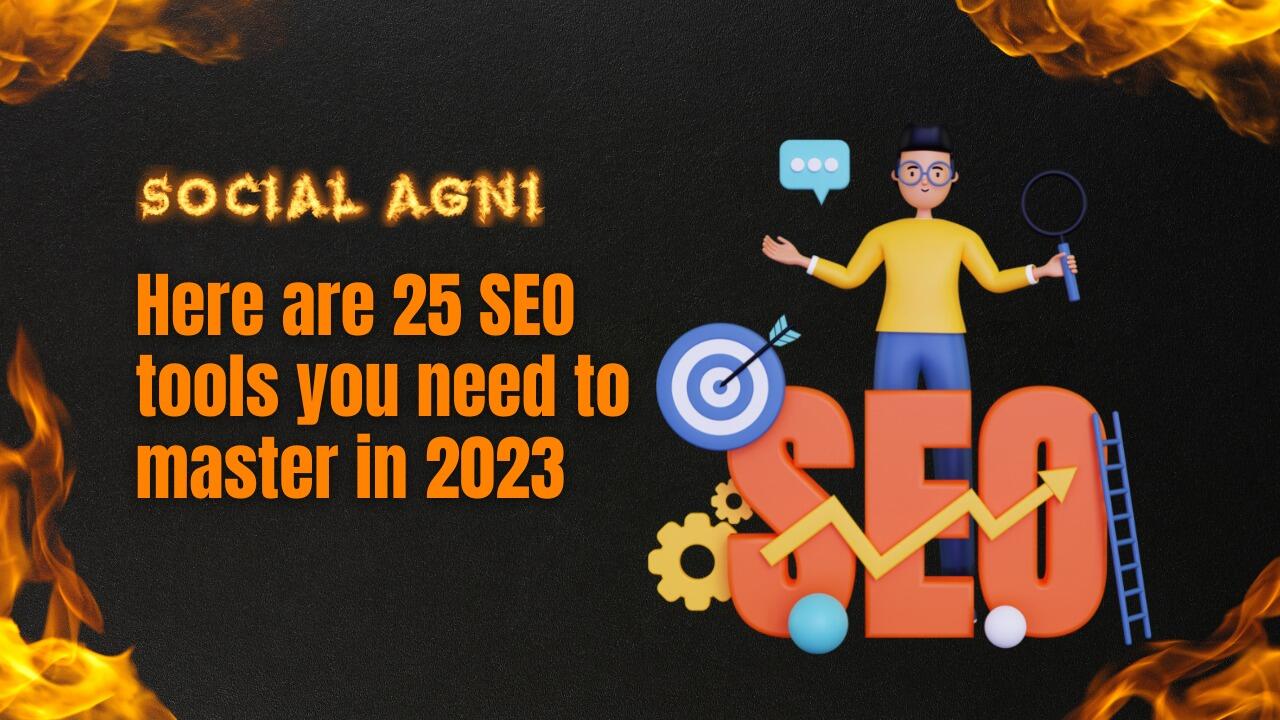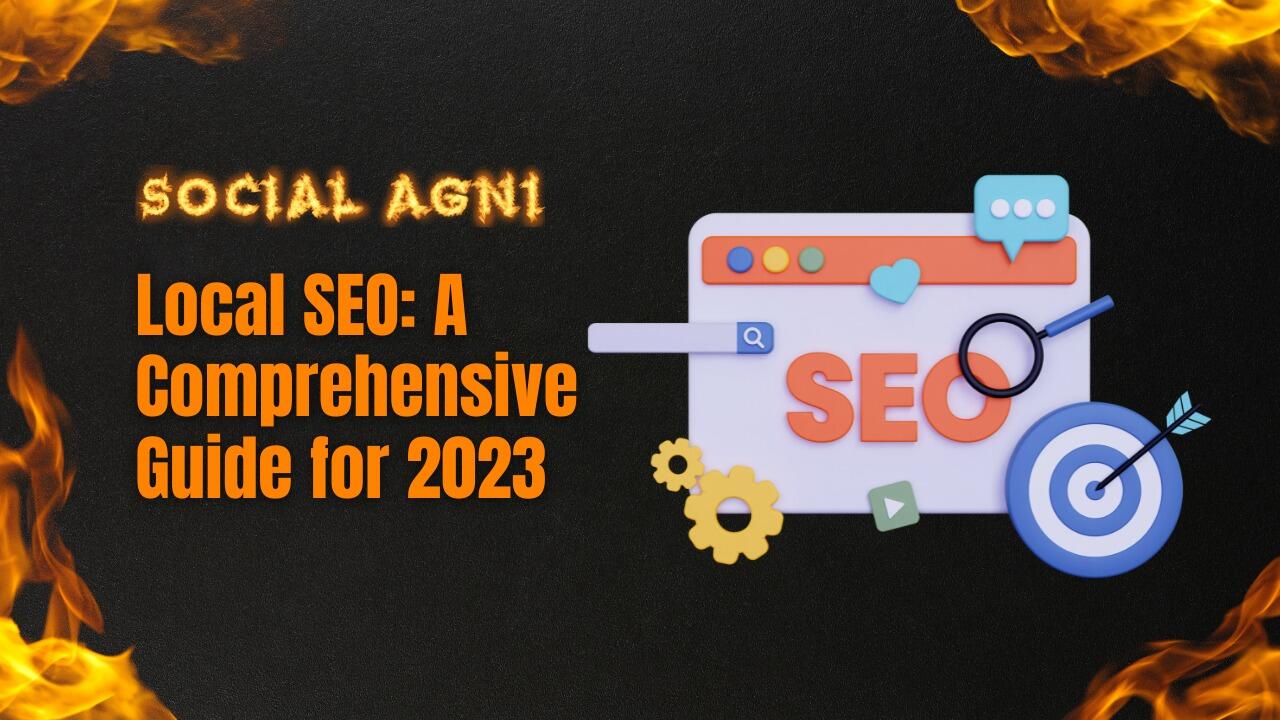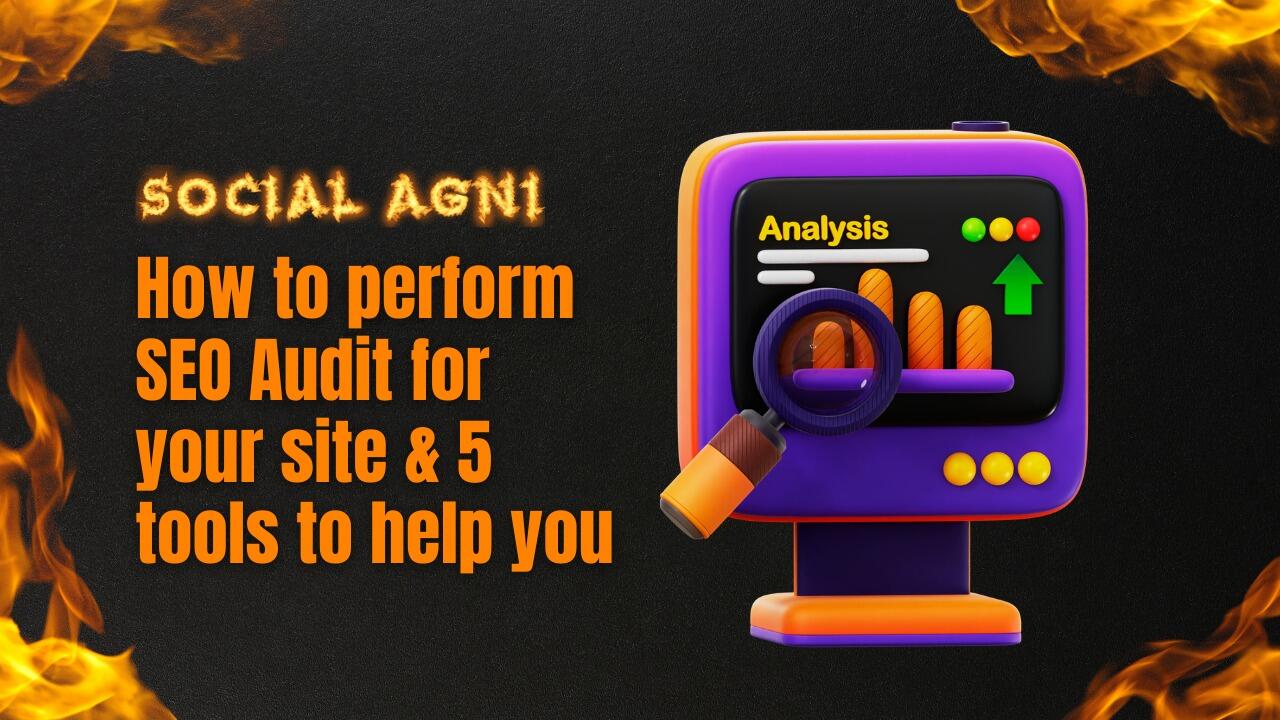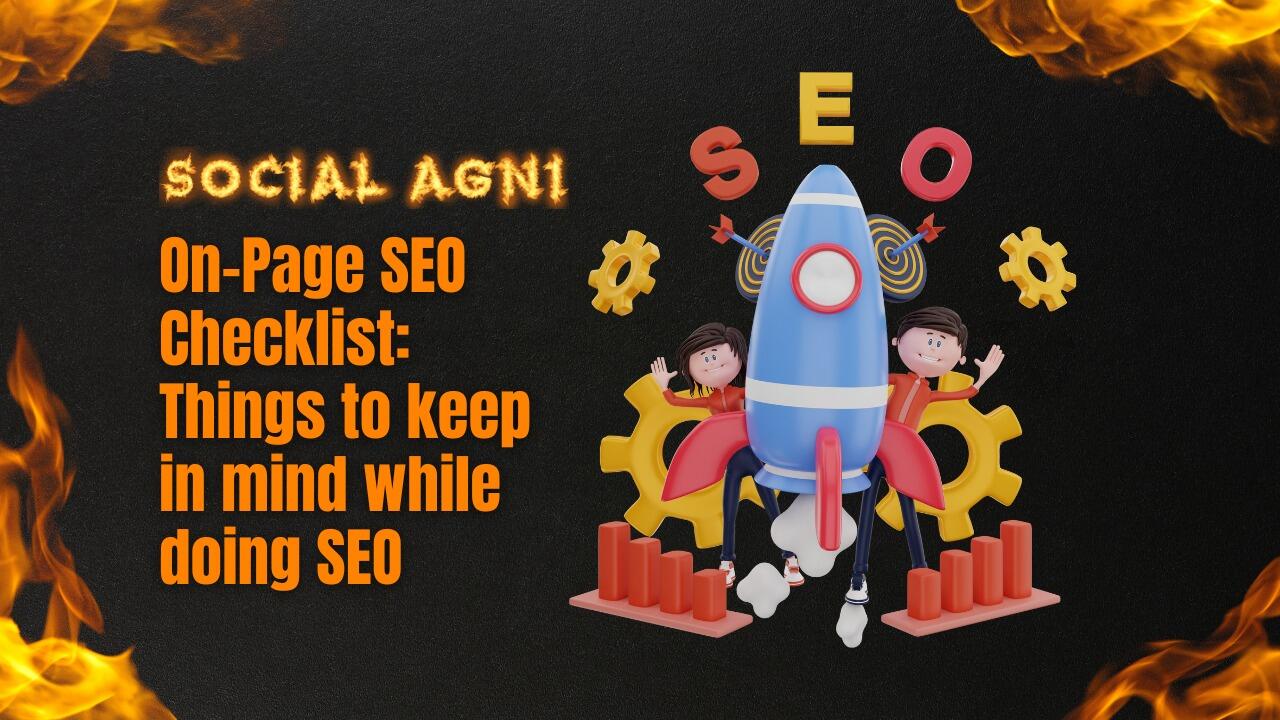In today’s digital era, having an online presence is essential for any business. However, for small businesses that operate locally, a strong online presence can be the key to success. This is where local SEO comes in. Local SEO refers to the process of improving the visibility and ranking of your website and online presence in local search results through optimization techniques. In this article, we’ll discuss seven key benefits of local SEO for small businesses. Better visibility in local searches Local SEO is a powerful tool that can help small businesses to increase their online visibility in local searches. By optimizing your website and online presence for local search, you can rank higher in search results, making it easier for potential customers to find you. To improve your visibility in local searches, you need to optimize your website content with local keywords. These are words and phrases that are relevant to your business and location. You can also create local business listings on search engines and build local links to your website. When your small business appears in the top search results, you can attract more potential customers to your website or store. It is crucial to make certain that your website is simple to use and straightforward to explore. This can help to keep visitors on your site and increase your chances of generating leads and sales. Increased website traffic Local SEO can also help small businesses to attract more website traffic. When your website appears in the top search results, potential customers are more likely to click on your website link. However, it’s not just about attracting more traffic to your website; it’s about attracting the right traffic. By optimizing your website for local search, you can target people who are interested in your products or services and are located in your area. This targeted approach can help you to attract more qualified leads and increase your chances of converting visitors into paying customers. To increase your website traffic, you need to create high-quality content that is relevant to your target audience. Social media platforms can also be utilized to publicize your content and interact with your audience. By providing valuable content and engaging with your audience, you can build a loyal following and attract more website traffic over time. More qualified leads Local SEO can help small businesses to generate more qualified leads. By targeting people who are searching for products or services in their local area, you can attract potential customers who are more likely to be interested in what you have to offer. To generate more qualified leads, you need to optimize your website and online presence for local search. This can involve creating local business listings on search engines, building local links to your website, and optimizing your website content with local keywords. You can also use social media to connect with potential customers and promote your products or services. By building relationships with your audience and providing value, you can attract more qualified leads and increase your chances of converting visitors into paying customers. Higher conversion rates Local SEO can also help small businesses to improve their conversion rates. By creating a better user experience for website visitors, you can increase the chances of converting them into paying customers. To improve your conversion rates, you need to make it easy for visitors to find the information they need and navigate your website. This can involve optimizing your website content, creating clear calls-to-action, and providing contact information. You can also use customer reviews and testimonials to build trust with potential customers. By providing social proof that your products or services are high-quality and reliable, you can increase the chances of converting visitors into paying customers. Increased customer engagement Local SEO can also help small businesses to engage with their customers better. By encouraging customer reviews and feedback, you can increase customer engagement and loyalty. To increase customer engagement, you need to provide excellent customer service and encourage feedback. You can also use social media to connect with your audience and respond to their questions and comments. By building relationships with your customers and showing that you value their opinions, you can build a loyal customer base that can help you to grow your business over time. Competitive advantage Local SEO can also give small businesses a competitive advantage over their competitors. By appearing in the top search results, you can make it easier for potential customers to find you and increase your chances of generating leads and sales. To gain a competitive advantage you need to create a unique selling proposition (USP) that sets you apart from your competitors. This can be a combination of your location, products, services, or customer service. You can also monitor your competitors’ local SEO strategies and adjust your own strategy accordingly. By staying up-to-date with industry trends and best practices, you can stay ahead of the competition and attract more customers to your small business. Cost-effective marketing Finally, local SEO is a cost-effective marketing strategy for small businesses. Unlike traditional advertising methods such as print ads or billboards, local SEO allows you to reach potential customers who are actively searching for your products or services. By optimizing your website and online presence for local search, you can attract more qualified leads and generate more sales without spending a lot of money on advertising. You can also use free tools such as Google My Business to create a local business listing and promote your products or services for free. This can help you to reach a wider audience and attract more customers to your small business. Conclusion In today’s digital age, local SEO is essential for small businesses that want to increase their online visibility, attract more targeted traffic, and gain a competitive edge. With its many benefits, local SEO can help your small business achieve its goals and grow its customer base. So, if you haven’t already, it’s time to start optimizing your website for local
SEO has become a fundamental aspect of digital marketing strategies. It is improving the ranking of a website on search engines like Google, Yahoo, and Bing. SEO is constantly evolving, and marketers need to keep themselves updated with the latest techniques and trends. Not all SEO strategies are alike. Some SEO techniques that were once considered effective may no longer work in the future. In this article, we will discuss the SEO techniques that marketers should avoid in 2023. Keyword Stuffing Keyword stuffing is the practice of repeating keywords repeatedly in the content to rank higher on search engines. This technique was once considered effective, but it is no longer the case. Search engines have become more sophisticated and can detect when keywords are being stuffed into the content. This not only results in low-quality content but can also lead to penalties from search engines. Instead of stuffing keywords, marketers should focus on creating high-quality content that applies to the topic and provides value to the users. Cloaking Cloaking is a technique where a website presents different content to search engines and users. This technique is considered unethical, as it is misleading to both search engines and users. Search engines can detect when a website is using cloaking and penalize it. Marketers should avoid this technique and instead focus on creating a user-friendly website that provides value to the users. Negative SEO Negative SEO techniques refer to tactics used to harm the search engine ranking of a competitor’s website. One common method used in negative SEO is the creation of fake profiles and posting negative online reviews for the competitor’s services and products. However, engaging in such actions can cause severe penalties from search engines, such as Google. It is important to note that unethical tactics like negative SEO can ultimately harm a business’ reputation and should be avoided. Click bait Click bait is a tactic used to entice individuals to click on a link by using misleading or sensational headlines. Despite being well-targeted, click bait can be frustrating for the reader when they click through and are faced with a poorly written article that is barely related to the title that initially caught their attention. While click bait may cause an initial increase in clicks, this will probably decline in the long run. This is because of a higher bounce rate as users realize they were misled and a decrease in trust in the website. Search engines like Google may penalize websites using click bait to promote their content. Hidden Text Hidden text is the practice of hiding text on a website by using a similar color as the background color. This technique is used in an attempt to rank higher on search engines by including keywords in the hidden text. Search engines can detect this technique and penalize the website for using hidden text. Marketers should focus on creating high-quality content that applies to the topic and provides value to the users. Paid Links Paid links are links that are purchased from other websites to increase the ranking of a website on search engines. This technique is considered unethical, as it is misleading to both search engines and users. Search engines can penalize websites for using paid links and can cause a decrease in the website’s ranking. Marketers should focus on building high-quality links from reputable websites instead. Doorway Pages Doorway pages are pages that are created specifically for search engines and are not intended for users. This technique is used to rank higher on search engines by creating pages that are optimized for specific keywords. Search engines can detect this technique and penalize the website for using doorway pages. Marketers should focus on creating high-quality content that applies to the topic and provides value to the users. Fake reviews Fake reviews are false statements made by fake profiles. This can involve creating positive reviews on your own website. While it is possible to do this, it is dishonest and deceitful towards potential customers. Instead, concentrate on offering top-notch products and services and you will naturally receive sincere and positive reviews. Thin Content Thin content is the practice of creating low-quality content intending to rank higher on search engines. This technique is no longer effective as search engines have become more sophisticated and can detect when content is of low quality. Using low-quality content can cause penalties from search engines. Marketers should focus on creating high-quality, original and relevant content that provides value to the users. This will not only help in ranking higher on search engines but also improve the user experience and build a good reputation for the brand. Over-Optimization Over-optimization is the practice of optimizing a website too much intending to rank higher on search engines. This technique can lead to penalties from search engines, as it can be considered spamming. Marketers should focus on creating high-quality, original and relevant content that provides value to the users and use optimization techniques in moderation. Conclusion In conclusion, marketers should avoid these 10 SEO techniques in 2023 as they are no longer effective and can lead to penalties from search engines. It is important for marketers to stay updated with the latest trends and techniques in SEO and to focus on creating high-quality content that is useful for users. The focus should be on creating a user-friendly website that provides value to users. By avoiding these SEO techniques, marketers can ensure that their website is in compliance with search engine guidelines and is able to rank higher on search engines. Frequently Asked Questions (FAQs) Why is keyword stuffing no longer effective in SEO? Keyword stuffing is no longer effective in SEO because search engines have become more sophisticated and can easily detect this technique. This technique can lead to penalties from search engines and harm the ranking of the website. Can a website get penalized for using cloaking? Yes, a website can get penalized for using cloaking as it is considered unethical by search engines. Cloaking
What is SEO? SEO, or Search Engine Optimization, is a critical aspect of digital marketing that helps businesses increase their visibility on search engines like Google, Bing, and Yahoo. In today’s digital age, SEO has become an essential tool for businesses to reach their target audience and grow their online presence. Here are ten reasons why SEO is important for modern businesses: 1) Increased Traffic to Your Website When your website is optimized for search engines, it increases the chances of appearing at the top of search engine results pages (SERPs) for relevant keywords. This leads to more visibility, and more people visiting your website. Increased traffic to your website can lead to more leads, sales, and conversions, ultimately boosting your bottom line. A high ranking on search engines means that your website is more visible to potential customers, which in turn leads to more traffic. More traffic to your website means more opportunities for lead generation and sales. The higher your website ranks on search engines, the more likely people are to find and visit your site. 2) Better User Experience When a website is optimized for search engines, it becomes easier for users to navigate and find what they are looking for. This can lead to increased engagement and a longer time on site, which can help to build trust and credibility with your audience. A well-optimized website is not only more accessible but also more appealing to users, which can help to improve your brand’s reputation and attract more customers. Another reason is, When your website is optimized for search engines, it’s also optimized for users. This includes improving website speed, making it mobile-friendly, and using clear and concise language to provide valuable information. A better user experience can lead to increased engagement, reduced bounce rates, and increased conversions. 3) Increased Brand Awareness A high ranking on search engines can increase the visibility of your brand and make it more recognizable to potential customers. By appearing at the top of search engine results, your brand becomes more recognizable and memorable, which can lead to increased brand loyalty and repeat business. SEO is particularly useful for businesses that sell products or services online, as it can help you reach your target audience and increase conversions. 4) Cost-Effective Marketing SEO is also a cost-effective marketing strategy. Unlike traditional advertising methods, SEO is a long-term investment that can provide a return on investment for years to come. Additionally, SEO is a passive marketing strategy, which means that once your website is optimized, it continues to attract traffic and generate leads without requiring ongoing effort or expense. It is a long-term strategy that provides ongoing benefits. Once your website is optimized, the results are sustainable, and you don’t have to continually spend money to maintain them. This makes SEO an excellent investment for businesses of all sizes. 5) Increased Credibility and Trust When your website appears at the top of search engine results, it gives the impression that you are a credible and trustworthy source of information in your industry. People are more likely to trust a website that appears at the top of search engine results, and they are more likely to return to your website in the future. Increased credibility and trust can lead to increased customer loyalty and repeat business. SEO can also help to increase credibility and trust with your audience. A high ranking on search engines indicates that your website is authoritative and trustworthy, which can help to establish your brand as a thought leader in your industry. Additionally, having a well-optimized website with high-quality content can help to build trust with your audience and position your brand as a trusted source of information. 6) Targeted Marketing SEO allows you to target specific keywords and phrases that are relevant to your business. This can help you to reach your target audience and generate more qualified leads. By targeting specific keywords, you can reach potential customers who are actively searching for products or services related to your business. This targeted approach can lead to a higher conversion rate and more sales. 7) Increased Conversion Rates SEO can also help to increase conversion rates for your business. A well-optimized website with high-quality content and a positive user experience can help to increase the likelihood that visitors will take a desired action, such as making a purchase or filling out a contact form. Additionally, by appearing at the top of search engine results, your website becomes more visible and accessible to potential customers, which can increase the chances of them taking action. SEO can help you better understand your target audience by providing insights into the keywords they use to search for products or services like yours. This information can help you tailor your website and marketing efforts to better meet the needs and interests of your target audience, increasing the chances of attracting and retaining customers. 8) Increased Return on Investment (ROI) SEO can help to increase the return on investment (ROI) for your business. By investing in SEO, you can increase your website’s visibility, drive more traffic to your site, and improve your search engine rankings. This can lead to increased brand awareness, increased leads, and increased sales. SEO can help you achieve a higher return on investment (ROI) compared to other marketing strategies. This is because SEO is a cost-effective way to reach your target audience, and it can provide a consistent stream of leads, sales, and conversions over time. By investing in SEO, you are investing in the long-term success of your business and increasing your chances of achieving a high ROI. 9) Stay Ahead of the Competition In today’s competitive business landscape, it’s crucial to stay ahead of your competition. By investing in SEO, you can ensure that your website is optimized for search engines and that you are appearing at the top of search engine results pages. This can help you attract more customers and stay ahead of the competition. 10) Mobile
Introduction SEO (Search Engine Optimization) is an ever-evolving field. As new algorithms and technologies come into play, your SEO skills must keep up with the trends. But how do you know what tools are essential for optimising websites and content? In this post, we will be exploring 25 of the most useful SEO tools that can help you get ahead of the competition in 2023. From keyword research to link building, these tools will equip you with all the knowledge and resources necessary to create a more successful online presence. Read on to find out which ones should be part of your toolkit! What are SEO tools? If you want to keep your website ranking high on search engines, then you need to use effective SEO tools. These tools can help you optimise your site content, track your progress, and find new opportunities for improvement. Some popular SEO tools include keyword research and analysis, content optimization, link building, competitor analysis, and website auditing. These tools can help you understand what type of content works best for your target audience and how to optimise it for better visibility on search engine result pages. Additionally, SEO tools can help you keep track of your website’s performance and find new opportunities for improvement. This includes tracking the effectiveness of your keyword strategies, monitoring changes in search engine algorithms, and uncovering any potentially damaging backlinks. There are many different SEO tools available on the market today. However, there are a few essential tools that you need to master to be successful with your SEO efforts. Here are some of the best SEO tools that you need to master: 1) AccuRanker If you want to rank higher in search engine results pages (SERPs), then you need to use AccuRanker. This powerful SEO tool can help you track your rankings and get insights into how your site is performing. With AccuRanker, you can see where you need to improve your SEO efforts and make changes that will help you rank higher. AccuRanker provides detailed reports on the performance of your website, including keyword rankings and backlinks. You can also use the tool to keep track of competitors’ websites and compare your progress. AccuRanker is easy to set up and use, making it an ideal tool for anyone looking to improve their SEO campaigns. AccuRanker makes it easy to monitor your SEO performance and quickly make changes to improve your rankings. This SEO tool also helps you understand what strategies are working for your competitors, giving you the information you need to stay ahead of the competition. 2) Ahrefs Ahrefs is a paid tool that provides detailed information about backlinks and keyword rankings. It is another comprehensive SEO platform that offers a variety of features, such as keyword research, backlink analysis, and competitor analysis. With Ahrefs, you can stay ahead of the competition and make sure your site is always optimised for the best results. This data is essential for understanding how your site stacks up against competitors and identifying new growth opportunities. Ahrefs is a powerful SEO tool that can help you to improve your website ranking in search engine results pages (SERPs). It offers a comprehensive set of features that can be used to conduct keyword research, competitor analysis, link building, and more. When it comes to keyword research, Ahrefs provides a thorough analysis of keyword difficulty, search volume, and SERP features. This information can be used to identify the best keywords to target for your website. Competitor analysis is another key area where Ahrefs shines. It provides detailed insights into the SEO strategies of your competitors, including the keywords they are targeting and the links they are building. This information can be used to develop an effective SEO strategy for your website. Link building is another important aspect of SEO, and Ahrefs provides a suite of tools to help you with this task. Its Site Explorer tool lets you see the backlinks pointing to any website, while its Link intersect tool allows you to find potential link partners based on shared keywords or topics. Overall, Ahrefs is an incredibly powerful SEO tool that can be used to boost your website’s ranking in SERPs. While it does have a subscription fee, its functionality more than justifies the cost for serious online marketers and businesses. 3) AuthorityLabs AuthorityLabs is a powerful SEO tool that can help you to track your keywords and improve your ranking on search engines. With this tool, you can get insights into your competitor’s strategies, find new opportunities for keyword growth, and track your progress over time. The tool also allows users to monitor their website’s performance and analytics organic search traffic. It can provide keyword insights, such as the average position, estimated clicks and impressions, to help you optimise your content for better visibility. Additionally, AuthorityLabs has a powerful backlink analysis feature that can reveal the quality of incoming links to your website and how they are affecting your ranking. It also provides reports on page speed and other important metrics to ensure that your site is running fast and efficiently. 4) Beam Us Up Beaming up is a popular way to refer to the act of making something disappear from one place and reappear in another. In SEO terms, beaming up can be used to describe the process of taking a website or web page from its current position in search engine results pages (SERPs) and moving it up to a higher position. Several different techniques can be used to beam up a website or web page in SERPs, but some of the most effective include creating compelling and keyword-rich titles and meta descriptions, optimising your website for mobile devices, building high-quality backlinks from authority websites, as well as using social media to promote your content. If you want to master SEO and learn how to beam up your website or a web page in SERPs, then these are some of the tools you need to master. 5) BrightLocal
Introduction As the digital landscape continues to evolve, so do the strategies used by brands, businesses and organizations to reach their target audiences. Local SEO is one such strategy that has become increasingly popular in recent years. This comprehensive guide will provide you with everything you need to know about local SEO in 2023, from understanding the basics of local search engine optimization to tips as to how to use local SEOs. Whether you’re just starting or are a seasoned professional, this guide is sure to help you take informed decisions and refine your overall marketing plan. What is local SEO? It is the process of optimizing your online content and presence to increase your visibility and ranking in local search results. It is a specialized form of SEO that focuses on optimizing for locally-based searches, usually with the intent of driving foot traffic to brick-and-mortar businesses. While local SEO shares many similarities with standard SEO practices, there are a few key differences. For one, local SEO is heavily reliant on citation building – making sure your business name, address, and phone number (NAP) are consistent across the web. This helps Google verify your business and match it with relevant searches. Secondly, local SEO also places a strong emphasis on reviews and ratings from sites like Yelp and Google My Business. Good reviews not only improve click-through rates (CTRs) but also signal to Google that your business is reputable and trustworthy. If you’re running a local business, then local SEO should be a key part of your digital marketing strategy. You may expand your target market and attract new clients by enhancing your website and other digital properties for local search. SEO and local SEO – what’s the difference? The practice of improving the ranking of a website on search engines is what Search Engine Optimization (SEO) is all about. Local SEO is a subset of SEO that is focused on optimizing a website for local search results. The main difference between SEO and local SEO is that local search engine optimization is geared towards getting a website to rank for locally relevant keywords, while SEO can be used to target keywords that are relevant to a national or international audience. Using local search engine optimization is crucial for any business that wants to be discovered by local clients. By optimizing their website for local search results, they can increase their chances of being found by people who are looking for what they have to offer. SEO is still important for businesses, even if they are not targeting a local audience. A strong SEO strategy can help a business rank high in search results for their industry, which can lead to more website visitors and potential customers. How does local SEO work? It is an important part of any comprehensive digital marketing strategy, as it helps you improve your search engine rankings for keywords related to your business and its products or services. Several different factors contribute to local SEO, including: The physical location of your business or organization The content on your website (including blog posts, articles, etc.) Your Google My Business listing Online directories and review sites Social media accounts Citations (listings of your business name, address, and phone number on other websites) Backlinks (links from other websites to yours) Local keyword optimization Optimizing for voice search Mobile-friendly website design and UX Benefits of using Local SEO Online business promotion can take many forms. But if you want to make sure that your target customers can find you easily and that you’re not spending a fortune on advertising, then Local search engine optimization is the way to go. Here are just some of the benefits that you can enjoy: You Can Save Money: As we mentioned, Local SEO is a cost-effective way to market your business online. You don’t have to spend a lot of money on advertising because your website will be optimized for local search engine results. This means that when people in your area search for businesses like yours, they’re more likely to find you first. You Can Reach Your Target Customers Easily: When you use Local SEO, you can be sure that your target customers will be able to find you easily. This is because your website will be optimized for local search engine results. This means that when people in your area search for businesses like yours, they’re more likely to find you first. You Can Get More Customers: Local SEO can help you get more customers because it allows you to reach your target customers easily. As mentioned above, when people in your area search for businesses like yours, they’re more likely to find you first. And when they do find you, they’re more likely to become customers because they know that you’re a local business. You Can Build Trust: Local SEO can help you build trust with your customers because they know that you’re a local business. People tend to trust local businesses more than national or international ones, so this can be an effective way to build relationships with your customers. You Get Long-Term Benefits: When you use Local SEO, the benefits are long-term since it’s not a one-time marketing effort. Drawbacks of Local SEO Local SEO can be a great way to improve your online visibility and attract new customers, but there are some drawbacks to consider before jumping in. First, it can be time-consuming to optimize your site for local search engine algorithms. You’ll need to research keywords, create content that includes those keywords, and make sure your website is properly coded so that search engines can find and index it. Second, competition for local search engine optimization is often fierce. If you’re not ranking in the top positions for relevant keywords, your chances of being found by potential customers are slim. Third, local SEO is constantly changing. Search engines are always tweaking their algorithms, which means you need to be prepared to adjust your strategy regularly. Finally, while
Discover is a feature of the Google app that helps you explore the world around you. It’s personalized for you, so you’ll see articles, videos, and more based on your interests. Plus, it’s constantly improving, so you’ll never run out of things to discover! If you’re anything like me, you’re always on the lookout for new and interesting things to do. Well, Google Discover is here to help! In a nutshell, Discover is a personalized feed of articles, videos, and more that’s constantly updated with new content. Plus, it gets better over time, so you’ll never run out of things to explore! What is Google Discover? Google Discover is a feature of the Google app that shows you articles, videos, and other content based on your interests. You can find this feature by opening the Google app and scrolling down. Google Discover uses your location, search history, and what you’re interested in to show you content that you might like. You can also customize Discover to show you more or less of certain types of content. For example, if you’re not interested in sports, you can ask Google Discover to show you fewer sports content. If you’re looking for something specific, you can search for it in Google Discover. Just type what you’re looking for into the search bar at the top of the page. This feature is a great way to keep up with the things you’re interested in. It’s also a great way to discover new things that you didn’t know you were interested in! Google Discover is a new discovery and search tool that allows you to find new content and information from around the web. It is designed to help you explore the internet and find new and interesting things that you may not have otherwise found. With Discover, you can search for new content by topic, keyword, or location. You can also save your discoveries to view later or share with others. What are the benefits? Google Discover is a great way to keep up with the latest news and information. It can help you save time by allowing you to quickly find what you’re looking for. Additionally, it can help you stay informed about current events, and learn new things. It helps you to get personalized information based on your interests. You can follow topics that you’re interested in and get timely updates on news, articles, and videos from those topics. In addition, you can also get recommendations for new content that you might be interested in. Plus, the more you use this Google feature, the more personalized the experience will be. Overall, Google Discover can be a helpful tool for keeping up with the latest information, staying informed, and learning new things. It can help you save time, stay informed, and learn new things. It’s a great way to get personalized information based on your interests, and it can be a valuable tool for both students and professionals. How to use Google Discover If you’re like most people, you probably use Google every day to search for information. But did you know that there’s a whole other side to Google, called Google Discover? It is a personalized feed of articles, videos, and more, based on your interests. Think of it like a news feed tailored just for you. You can find Discover by opening the Google app on your Android phone or by going to google.com/discover on your computer. To get started with Discover, all you need to do is tell Google what topics you’re interested in. From there, Google will do the rest, serving up a never-ending stream of content that’s sure to keep you entertained. If you’re not sure where to start, here are some tips on how to get the most out of Google Discover : 1. Follow Your Interests One of the best things about Discover is that it gets better the more you use it. That’s because it uses your past behavior to surface content that it thinks you’ll find interesting. So if you’re ever feeling bored or uninspired, just take a look at your Discover feed and see what piques your curiosity. 2. Read, Watch, and Listen Google Discover is more than just a list of articles. It also includes videos, podcasts, and other types of content. So whether you’re in the mood to read, watch, or listen, there’s sure to be something for you in your Discover feed. 3. Save for Later If you come across something in your Google Discover feed that you want to read or watch later, just tap the “Save” button. That way, you can easily find it again when you have more time. 4. Explore New Topics If you’re ever curious about a topic that you don’t know much about, Discover is a great place to start your research. Just scroll through your feed and see what articles pop up. You might be surprised at what you find! 5. Customize Your Feed Don’t like something that you’re seeing in your Discover feed? You can always unfollow a topic to stop seeing content about it. And if there’s a particular source that you always want to see content from, you can follow it so that its articles appear at the top of your feed. To customize your Discover feed, just tap the three lines in the top-left corner of the app and then select “Your Feed.” From there, you can add and remove topics, sources, and even people who you want to follow. Google Discover is a great way to stay up-to-date on the topics that you care about. So next time you’re looking for something to read, watch, or listen to, be sure to check out your Discover feed. How to use Assuming you already have the Google app installed on your device, open the app and tap the Discover icon (it looks like a compass). If you don’t see the Discover icon, make sure you’re running the latest version of
If you manage a website, you likely know a thing or two about HTML tags. These are the small snippets of code that help give your web pages structure and tell search engines what your content is about. But there’s one HTML tag that’s often overlooked, even by experienced webmasters: the canonical tags. In this article, we’ll explain what canonical tags are and how to use them properly. By the end, you’ll have a better understanding of how this important HTML element can help improve your website’s SEO. What are Canonical Tags? A canonical tag is an HTML element that helps webmasters prevent duplicate content issues on their websites. They are used to tell search engines which version of a piece of content is the original, or “canonical,” version. This is important because search engines often index multiple versions of the same content, which can lead to lower quality search results. Duplicate content can be a major problem for website owners because it can hurt their search engine rankings and make it harder for visitors to find the information they’re looking for. Canonical tags can help solve this problem by telling search engines which version of a webpage is the preferred, or “canonical” version. Canonical tags can be used on pages with identical or similar content. For example, if you have a product that comes in multiple colors, you could use the canonical tags to point search engines to the page with the original product listing. This would help ensure that your product pages are not seen as duplicate content and are ranked lower in search results. There tags are also helpful in situations where you have multiple versions of the same page, such as a mobile version and a desktop version. In this case, you would use the canonical tags to point search engines to the preferred version of the page. How to Use a Canonical Tag A canonical tag is an HTML element that helps webmasters prevent duplicate content issues on their websites. It is a self-referencing tag that tells search engines which version of a webpage is the primary or “canonical” one. Canonical tags are particularly useful for websites that have very similar or identical content on multiple pages. For example, if you have a blog with multiple authors, each author may have their own author page on your site. If these pages all have the same content, you can use a canonical tag to tell search engines which page is the primary one. Similarly, if you have a website with both a “http” and a “https” version, you can use a canonical tag to specify which version is the primary one. To use a canonical tag, simply add the following element to the head of your webpage: Replace “http://www.example.com/” with the URL of your primary webpage. That’s all there is to it! By adding this simple element to your webpages, you can help ensure that search engines index the right version of your content There are a few things to keep in mind when using canonical tags: Make sure the URL you want to canonize is the only version of that page that exists on your website. Use absolute URLs in your canonical tags, not relative URLs. Add canonical tags to all versions of a page, not just the original. Include the trailing slash (/) in your canonical tag if the page is accessible with or without it. Use 301 redirects to send traffic from duplicate pages to the canonical page. If you have multiple pages with similar content, consider using rel=”canonical” tags to point search engines to the main version of each page. When search engines see multiple versions of the same page, they can get confused about which one to index. The canonical tag tells them which version is the main one, so they can index that one and ignore the others. Canonical tags are important because they help ensure that your website’s content is properly indexed by search engines. Without these tags, search engines might index multiple versions of the same page, which could hurt your website’s search rankings. In addition to using canonical tags, you should also make sure that your website’s internal linking structure points to the main version of each page. For example, if you have a page with multiple versions (e.g., http://example.com/page-1 and http://example.com/page-1?print=1), all the links on your website should point to the http://example.com/page-1 version. This will help ensure that search engines can find and index your content correctly. If you’re uncertain whether your website is using canonical tags, you can check the source code of your pages to see if they contain a canonical tag. If not, you can add one yourself. When to Use a Canonical Tag If you have pages on your website that are very similar or identical, you may want to consider using a canonical tag. This will tell search engines which page is the “main” page, and will help to avoid any confusion when indexing your site. For example, let’s say you have a product that comes in multiple colors, and each color has its own page on your site. You would then use a canonical tag on each of these pages, pointing to the main product page. This will tell search engines that even though there are multiple pages for this product, the main page is the one that should be indexed. Similarly, if you have a blog with multiple authors, you may want to use canonical tags to point to the main blog page. This will help to ensure that only one version of the blog is indexed, and will prevent any duplicate content issues. In general, you should only use canonical tags if you have identical or very similar pages on your website. If there is no risk of confusion, there is no need to use a canonical tag. Best Practices for Using Canonical Tags If you’re running a website, it’s important to make sure that your pages
Search Engine Optimization or “SEO” is the practice of optimizing a website to help it rank higher in search engine results pages. This can be done through various methods such as improving site content, developing backlinks, and using keywords throughout the site. If you’re looking to improve your site’s SEO, then read on for a comprehensive guide on how to perform an SEO audit and the tools required! What is an SEO Audit? An SEO audit is a review of your website with the goal of improving its search engine optimization. This includes looking at factors like site structure, content, keywords, and link building. It can be helpful to use tools like Google Analytics and Search Console to help you with your audit. It is a process for assessing your website’s performance against key ranking factors to identify areas that need improvement. By performing an SEO audit, you can make sure that your website is optimized for search engines and improve your chances of ranking higher in search results. Why perform an SEO audit? There are many reasons why you might want to perform an SEO audit on your website. Maybe you’re not getting as much traffic as you’d like, or perhaps you’re not ranking as high in search results as you’d like. Whatever the reason, an SEO audit can help you identify areas where your website could be improved in terms of search engine optimization. An SEO audit will take a close look at your website and analyze various factors that affect your ranking in search engines. These factors include things like the quality of your content, the structure of your website, and how well you optimize your website for specific keywords. After taking all of these factors into account, the auditor will give you a report that outlines areas where your website could be improved. Tools that can help you perform an SEO audit include Google Analytics and Google Search Console. These tools will help you collect data about your website’s traffic and performance in search results. Armed with this data, you’ll be able to identify areas where your website needs improvement. There are many reasons why you should perform an SEO audit on your website. SEO audits can help you identify areas where your website needs improvement to rank higher in search engine results pages (SERPs). They can also help you identify any technical issues that may be preventing your website from ranking as high as it could. SEO audits can be performed manually or with the help of specialized software. Manual audits can be time-consuming, but they can give you a more detailed look at your website. Software-based audits can be faster and easier to use, but they may not be as comprehensive as a manual audit. No matter which method you choose, an SEO audit can help you improve your website and increase your chances of ranking higher in SERPs. How to Perform an SEO Audit Performing an SEO audit is a great way to improve your website’s search engine optimization. There are many different aspects of SEO that you can audit, but some of the most important ones include your website’s content, structure, and link profile. Content is one of the most important factors in SEO. Your website’s content should be keyword-rich and informative. It should also be updated regularly to ensure that it is fresh and relevant. Your website’s structure is also important for SEO. Your website should have a clear hierarchy and navigation. All of your pages should be accessible from the homepage. Additionally, your website’s URLs should be short and descriptive. Finally, your website’s link profile is also important for SEO. Your website should have links from high-quality websites. These links will help to improve your website’s search engine ranking. There are a few different ways that you can perform an SEO audit on your site. One way is to use a tool like Google Analytics. This will help you to track your site’s traffic and see how users are finding your site. You can also use a tool like Moz to track your site’s ranking in the search engines. Another way to perform an SEO audit is to simply look at your site and see how it is organized. Are your pages well-organized and easy to navigate? Do you have a good mix of keyword-rich content and meta tags? Is your site mobile-friendly? These are all important factors that can affect your site’s ranking in the search engines. You can also ask someone else to take a look at your site and give you their opinion on what you could improve. Sometimes it helps to get an outsider’s perspective on your site. Overall, there are a few different ways that you can perform an SEO audit on your site. Use a tool like Google Analytics or Moz to track your traffic and ranking. Alternatively, you can simply look at your site and see how it is organized. Ask someone else for their opinion on what you could improve. List of 5 tools to help you with your SEO audit There are a number of tools that you can use to help you perform an SEO audit. These tools will help you to identify any areas where your website needs improvement in terms of search engine optimization. 1. Google Analytics: Google Analytics is a free web analytics tool that provides insights about your website traffic and marketing effectiveness. It also (provide) you information about your audience, such as their geographical location, what devices they use to access your website, and how they found you. 2. Search Console: Search Console is a free Google tool that helps you monitor and troubleshoot your site’s appearance in Google Search results. It also provides insights about the keywords people are using to find your site, the links they’re clicking on, and any crawling or indexing errors that may be preventing your site from appearing in search results. 3. Moz: Moz is a paid SEO
XML sitemaps are a great way to improve your website’s performance and SEO ranking. In this article, we’ll explain what an XML sitemap is and why every site should have one. What is an XML Sitemap? An XML sitemap is a file that contains a list of all the pages on your website. It helps search engines like Google discover and index your website’s content. If you have a website, you should always create an XML sitemap and submit it to Google. Creating an XML sitemap is quick and easy, and it can really help improve your website’s visibility and performance in search results. Here are some benefits of having a sitemap: Helps Google (and other search engines) find and index all the pages on your website. Ensures that all your website’s pages are included in search results. Increases the chances that your website’s pages will be ranked higher in search results. Helps Google (and other search engines) understand your website’s structure. Allows you to specify the importance of each page on your website. Helps Google (and other search engines) crawl your website more efficiently. How to create an XML Sitemap An XML sitemap is a great way to improve your website’s SEO. It helps search engines find and index your pages more effectively, and it can also give you valuable insights into how your site is being crawled and indexed. Creating an XML sitemap is easy – there are plenty of online tools that will do it for you. Once you have your sitemap, just submit it to Google Webmaster Tools, and you’re all set. If you’re not already using a sitemap, there’s no time like the present to start reaping the benefits. The benefits of having an XML Sitemap If you’re running a website, there’s a good chance you’re already familiar with HTML sitemaps. These sitemaps are designed to help visitors navigate your site by providing an overview of your site’s structure. While HTML sitemaps are certainly useful, they don’t do much to help search engines index your site. This is where XML sitemaps come in. XML sitemaps are designed specifically for search engines and provide them with valuable information about your site, such as the structure of your site, the frequency of your content updates, and the importance of individual pages. This information can help search engines more effectively index your site, which can lead to better results in the SERPs. In addition to improved search engine visibility, XML sitemaps can also help improve the usability of your site for both visitors and search engine crawlers. By providing an overview of your site’s structure, XML sitemaps make it easier for both humans and bots to find the content they’re looking for. This can lead to more traffic and engagement for your site overall. If you’re not already using an XML sitemap for your website, there’s no time like the present to get started. Implement How to submit your XML Sitemap to Google If you want your website to show up in Google search results, you need to submit your XML sitemap to Google. Here’s how: Go to Google’s Search Console. If you haven’t already, add and verify your website with Google Search Console. In the left sidebar, click Crawl, then Sitemaps. Add your sitemap URL and click Submit. That’s it! Once you submit your sitemap, Google will crawl and index your website so that it shows up in search results. How often should you update your XML Sitemap? If you have a website, you should have an XML sitemap to help improve your site’s search engine results. But how often should you update your sitemap? Ideally, you should update your sitemap whenever you change your website. This could include adding or removing pages, changing the content on a page, or anything else that would impact how search engines crawl and index your site. If you don’t have the time or resources to update your sitemap every time you make a change, try to do it at least once a month. This will ensure that search engines have the most up-to-date information about your site and can properly crawl and index it. What are the common mistakes people make with XML Sitemaps? One of the most common mistakes people make when creating an XML sitemap is not including all the pages on their website. Every page on your website should be included in your XML sitemap in order for it to be effective. Another mistake people make is not updating their XML sitemap regularly. As you add new content to your website, you should also add it to your XML sitemap so that search engines can index it. Further, some people mistakenly believe that an XML sitemap will guarantee that all their pages will be indexed by search engines. This is not the case – an XML sitemap simply makes it easier for search engines to find and index your content. Finally, another common mistake is submitting a sitemap that is not well-formed. Your XML sitemap should be formatted correctly in order for search engines to be able to read it. Why Websites need an XML Sitemap? XML sitemaps are a great way to improve your website’s SEO. They help search engines find and index your pages, which can lead to improved ranking and visibility. XML sitemaps also make it easier for users to find the content they’re looking for on your site. Websites need a sitemap for better results because it helps search engines find and index your website more effectively. XML sitemaps contain information about your website’s content and structure, which makes it easier for search engines to understand and crawl your site. It can also be used to give search engines additional information about your website, such as when your content was last updated, how often it changes, and any alternate versions of pages you might have (such as in different languages). This can help ensure that your website’s content is always fresh and
You might have the best website in the world, but if nobody knows about it, then what’s the point? Search Engine Optimization (SEO) is how you make sure your site comes up when people search for relevant keywords on Google, Bing, and other search engines. This can be a difficult and time-consuming process, but our on-page SEO checklist will make it easier for you! How On-Page SEO benefits you? There are many benefits to On-Page SEO, including: Increased traffic: By optimizing your website for search engines, you can increase your website’s visibility in search results, which can lead to more clicks and more traffic. Improved rankings: Optimizing your website’s content and structure can help improve your website’s Rankings in search results, which can lead to more traffic. Greater ROI: Since On-Page SEO can help improve your website’s visibility and Rankings, it can also lead to a higher ROI from your SEO campaigns. Increased brand awareness: By optimizing your website for search engines, you can help increase your brand’s awareness among potential customers who are searching for relevant keywords. Better user experience: By optimizing your website for search engines, you can make it easier for users to find the information they need on your site, which can improve their overall experience with your site. What to Avoid While Doing On-page SEO a) Don’t stuff your keywords Stuffing your keywords into your content in an attempt to game the system will not only turn off your readers, but it will also get you penalized by Google. A better approach is to focus on creating quality content that naturally incorporates your target keywords. b) Don’t neglect your title tag Your title tag is one of the most important elements on your page, so don’t neglect it! Make sure your title is clear, concise, and includes your target keyword. c) Don’t forget about meta tags Meta tags are another important element of on-page SEO. Be sure to include relevant and keyword-rich meta tags on each page of your site. d) Don’t overlook Alt text Alt text is used to describe images for those who are unable to see them. This is important for both accessibility and SEO purposes. Be sure to include Alt text for all images on your website. e) Don’t forget about internal linking Internal linking is important for both usability and SEO purposes. Be sure to include links to other pages on your website within your content. This will help users navigate your site and help search engines crawl your pages more effectively. f) Don’t forget to optimize your URLs Your URL should be clear, concise, and include your target keyword. This will help both users and search engines understand what your page is about and make it more likely that your page will rank for that keyword. g) Don’t forget about social media Social media is important for marketing as well as for SEO purposes. Be sure to include links to your social media profiles on your website and share your content on social media. This will help you reach a larger audience and potentially increase your search engine ranking. h) Don’t neglect your mobile website With more and more people using mobile devices to access the internet, it’s important to make sure your website is optimized for mobile. This includes having a responsive design and ensuring that your content is easy to read on a small screen. i) Don’t forget about local SEO If you’re targeting locally, be sure to optimize your website for local SEO. This includes adding your business to local directories, claiming your Google My Business listing, and adding relevant keywords to your website. j) Don’t forget about voice search Voice search is an increasingly popular way to search the internet, so it’s important to optimize your website for voice search. This means using natural language and long-tail keywords throughout your content. On-Page SEO Checklist On-page SEO is the process of optimizing your website’s pages and content to make them more search engine friendly. This includes things like choosing the right keyword phrases to target, making sure your pages are well-structured and easy to read, and ensuring that your site is free of technical errors. To help you optimize your site for better search engine visibility, we’ve put together this on-page SEO checklist. Use it as a guide when improving your own website, and you should see a noticeable difference in your search engine rankings. 1. Choose the right keyword phrases The first step in any on-page SEO campaign is keyword research. You need to find out what keywords or key phrases people are using to search for businesses like yours. Once you know this, you can then start incorporating these keywords into your website’s content, title tags, meta descriptions, and other places where they’ll be noticed by search engines. 2. Use keywords throughout your content: Once you have targeted a couple of valuable keywords, make sure to use them in your content. Place them in the title, in the body, and in the tags and metadata. 3. Optimize your title tags and meta descriptions Your title tags and meta descriptions are two of the most important elements on your website when it comes to on-page SEO. These are the short descriptions that appear in search engine results, so it’s important to make them as keyword-rich and interesting as possible. Write headlines that are clear and concise and include relevant keywords. Likewise, make sure your meta descriptions are interesting and informative so that people will want to click through to your site. 4. Structure your pages well Search engines like websites that are well-structured and easy to navigate. This means using things like headings and subheadings to break up your content, and using internal linking to help search engines understand the relationship between your pages. 5. Make sure your website is mobile-friendly With more and more people using mobile devices to access the internet, it’s important to make sure your website is optimized for these
